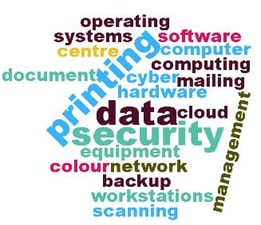Business is always a challenging contest of dealing with the urgency of each day while keeping an eye on the future to ensure that problems do not occur because important decisions are put off. 
When looking at business office technologies this is also a true issue. Since every day sees the tools that are currently in existence being used constantly and often at volumes beyond the original design the potential for unexpected breakage or disruption is always present. One of the key ways to avoid lost time and resources due to emergency challenges is to plan ahead for upgrades, replacements and new tools. Finding the time to do this is always a challenge and is often something which is left for later.
Each year and each quarter it is important to step out of the day to day for a bit of time to look at what is happening with current tech and assessing whether it is meeting needs today, has capacity for the future months and perhaps years, and what design issues are in place.
Software
Issues such as operating system platforms for workstations and for network components have to be watched and planned for upgrades as appropriate. For business operations platforms which are prevalent the planning for upgrades or for complete replacement is always a major activity due to the many facets of the business which will be affected with change. Security platforms are primarily an IT department issue for implementation but are a management issue for ensuring that they are adequate for your protection of data and systems. The consequences of cyber security being lax are potentially massive and cannot be over stated.
Hardware
Computer hardware is one of those tools which everyone loves to hate. The constant changes in speeds, capacities and formats can offer challenges for those who find this a confusing field. Having good dependable resources to help with this part of the system is important. The options today are broad and you need to understand what your needs both for horse power and flexibility might be.
Server systems and the related backup, power protection and security pieces are the backbone of most businesses. These can be on premise, co-located in a data centre or virtual through cloud computing using data centre delivery. Each of these methods of meeting network needs has benefits and understanding how the options best work for you takes study. Changing from one delivery method to another can take time and special planning and is something not to be left for an emergency.
Printing hardware is also a regular component of all businesses. Stand alone, or network lasers have been a main stay of most offices. Multifunction printers (MFPs) have become a major part of the hardware fleet of most offices offering many more functions and more robust handling than most printers. Of course colour print capability is now readily available at cost effective levels and is a consideration for most businesses.
Communications
Phone and electronic communications have become computer and system based in most businesses today. Using IP protocols to build a suitable communication structure to support in premise and exterior communication is a key part of any IT environment. These systems require the same care and management that are provided to other elements of the IT environment.
Other Tools
Within all businesses there are other elements which are subject to the same needs for planning and care. It may be a dedicated document management structure to provide secure and readily accessible documentation through out the business. It might be the ability to properly handle volumes of paper communications through mailing systems and hardware. It may be integration with production operating systems which interface with the business operations suite to link inventories, manpower planning and other components. Each business experiences its own mix of the many components available.
Don't wait for emergency
The reason to include the regular systematic planning I am proposing is that it is the easiest way to make sure your systems and tools are in place and ready for you to respond when the inevitable emergency challenge occurs. It could be an external shift, major infrastructure failure, sudden sickness of key personnel, major market shift or other external pressure which can challenge your operations. Too often I have seen situations where a business has put off implementing a change they know is needed only to be kick extra hard when that system took a bigger than normal stress and broke. The scramble to get back up to speed while dealing with the inherent weakness at the same time is always harder than it needed to be.
Business always has its challenges. Meeting them incrementally is always easier than doing so in crisis. Take some time to evaluate and plan regularly it will pay off for sure.




